|
|
|
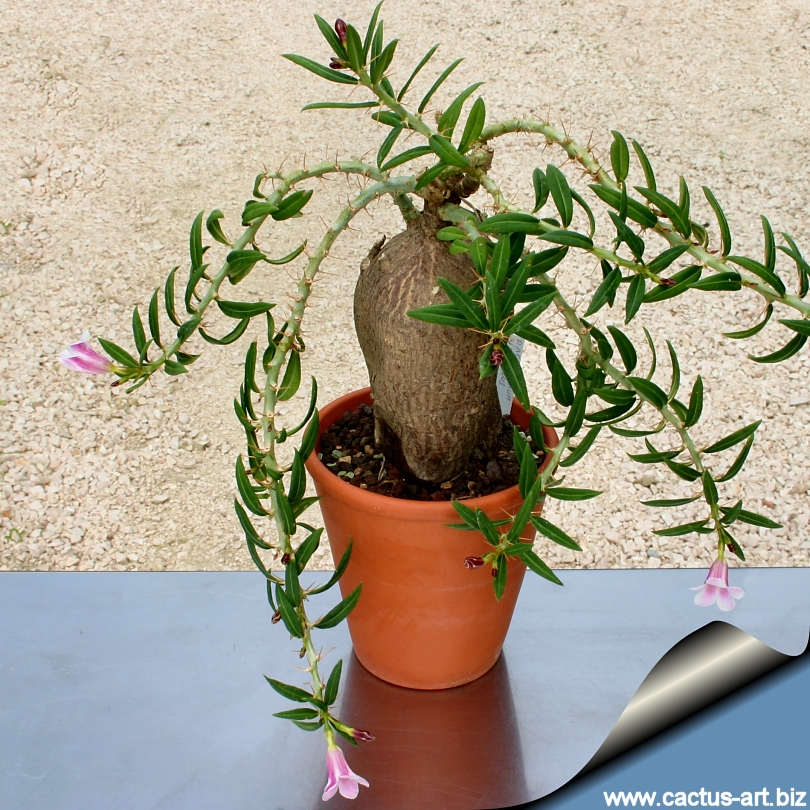
Pachypodium bispinosum is a lovely and unusual plant for a sunny window
or greenhouse, with a remarkable caudiciform trunk. It is the most
floriferous of all species in cultivation.
|
|
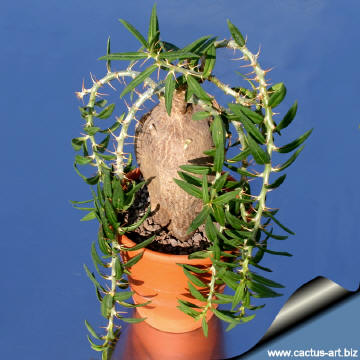 |
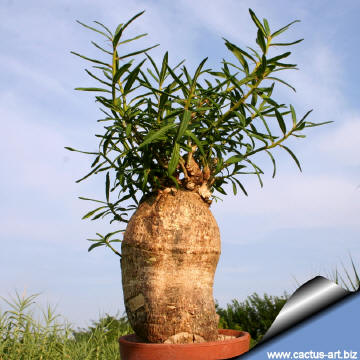 |
|
. |
|
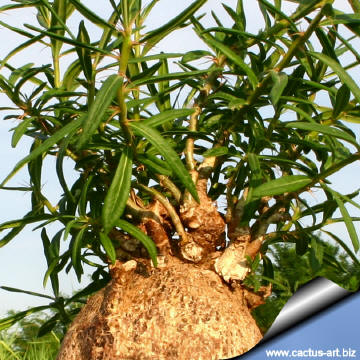 |
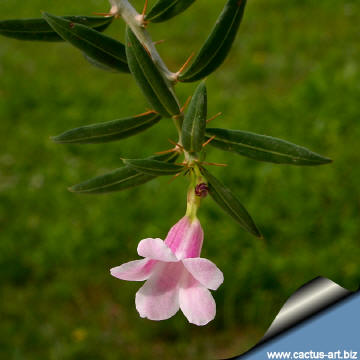 |
|
. |
|
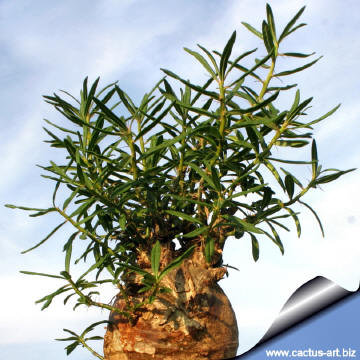 |
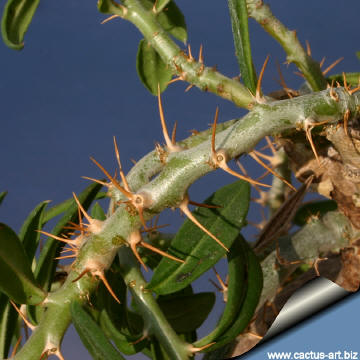 |
|


Advertising |
|
|
|
|
Family: Apocynaceae
Scientific name:
Pachypodium bispinosum
(L. f.) A. DC. 1844
Origin:
The species is a almost entirely confined to the Eastern Cape
Province in South Africa(Port Elizabeth).
Habitat: Usually found in sunny positions on stony places,
where they are associated with other representatives of the flora of dry
areas. This species, along with
P. succulentum, can tolerate
subzero temperatures in its natural environment in winter. They are
found in xeric habitats, and are naturally well adapted to the hot and
dry environment in which they grow. The succulent stems act as water
stores, and enable the plants to survive the harshest conditions. The
thick tuberous underground stems also help the plants to survive long
periods without water. They can therefore withstand intense heat and
long periods of drought.
Conservation status: Listed in
CITES appendix 2.
Common Names include:
Etymology: Bispinosum means "with paired spins",
even so the name is of no
special significance as all pachypodiums possess paired spines.
|
|
Description: Deciduous caudiciform shrublet, up to 1.2 m tall.
Low-growing, similar to Pachipodium succulentum, with branching shoots and
small flowers.
Caudex (tuberous stem): Succulent, partially subterranean, up to 60
cm m tall, 20 cm (or more) thick.
Stems: Produces thin branches from the tuber.
They are armed with
paired straight spines, 10–20 mm long.
The branches will grow up to 120
centimetres in length.
Leaves: Narrow, scattered, or in tufts on the stems.
Flowers: Bell-shaped, light pink in shades of purple to pink with
a darker tube, few and in clusters at the tips of the branches, 15–20 mm
in diameter.
Blooming season: The flowers appear with the leaves from June
to December .
Note:
When not in flower, it is indistinguishable from
P. succulentum,
with which it overlaps in distribution.
P. succulentum has thick,
bonsai-like branches, and the leaves are less hairy, with margins curling
down more distinctly and spines that are shorter.
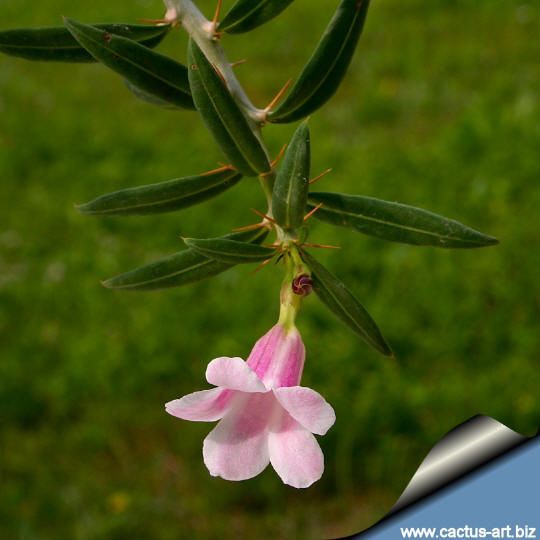
The flowers appear with the leaves from June
to December at the tips of the branches.
|
|
|
|
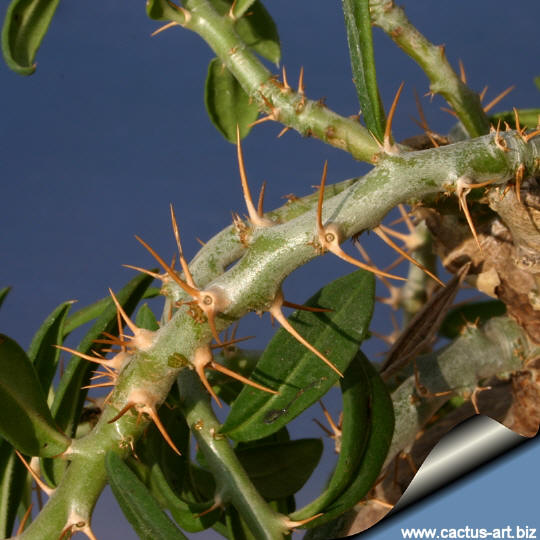
Paired spines of P. bispinosum.
Culture: They seem to be particularly prone to rot if allowed to get
too wet in winter, or if cultivated under less than ideal conditions and
care. Water sparingly in summer and give extra well-drained soil to
avoid waterlogged conditions. No water from November to March.
The
watering program will change, depending on temperatures and stage of
growth, but it is best not to let this plant dry out completely for any
length of time. It is sensitive to cold, and should be kept totally
dry in winter, at or around 4°C. Protect from frost.
It tends to lose its
leaves and go
dormant in winter. It likes
full sun to light shade . Reproduction: Seeds/Cuttings
|
|